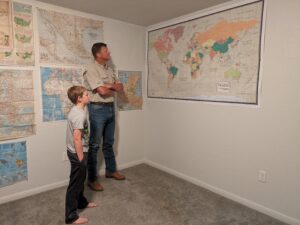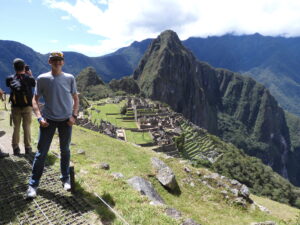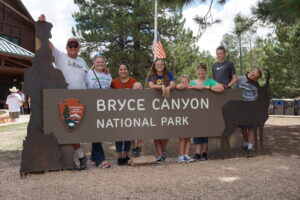Farther Beyond
According to ancient mythology, the Pillars of Hercules stood at Gibraltar and Ceuta on the Western edge of the Mediterranean marking the end of the world. In the Bible, when the prophet Jonah fled God’s call to preach at Nineveh, he got on a ship bound for Tarshish (Spain). He meant to run as far as he could away from Nineveh – to the end of the world. When the apostle Paul wrote the church at Rome to explain the extent of his future preaching plans, he told them he intented to visit them enroute to Spain. He was going to preach the gospel to the ends of the earth! At the very least, the Strait of Gibraltar marked the end of the known world. A tradition had developed by the Renaissance that the Pillars of Hercules were inscribed with the Latin warning, ne plus ultra, “no more beyond.” In 1516, Charles I (Charles V of the Holy Roman Empire) succeeded Ferdinand and Isabella to the recently reunited Spanish throne. Ferdinand and Isabella had famously sponsored Columbus’s expedition which had just encountered the Americas a couple of decades earlier. Charles I adopted the motto Plus Ultra flipping the traditionally held warning on its head. Literally translated, plus ultra means “more beyond.” A more usable English translation would be “further beyond” or “farther beyond.”
Enlightened Greek thinkers and astronomers had a pretty good idea the earth was spherical by the third or fourth century B.C. This hypothesis was adopted by educated and reflecting people throughout antiquity and the medieval world. Amazingly, it took nearly two more millennia for the Old World to discover the New. By the time Charles I adopted the motto plus ultra, Spain had claimed most of the newly discovered territory, even if they were still in the process of exploring and conquering it. Historians often shrink the significance of the motto by inferring that the Hapsburg version of plus ultra simply referred to their desire to expand Catholicism and their sovereignty to places “farther beyond.” These were important to them, but surely there was more to it than that. Consider the forward-thinking Spanish monarchs and adventurous explorers and sailors of the era who embarked on journeys no one (Leif Erikson excepted) had ever tried before. Even the profoundly enterprising Portuguese navigators had only turned south and rounded Africa on the way to the Far East when they breached the Pillars of Hercules. All of these people understood that there was a whole new world to explore farther beyond the self imposed limits of the known, the familiar, and the traditional – a whole other side to the world that had been previously unknown.
Why did it take so long for Europeans to cross the Atlantic when people had known theoretically for millennia that the world was round? Traditions are powerful. Long-held assumptions are built into our human nature. We fear the unknown. It often does not even occur to us to explore patterns outside those with which we are familiar. Why don’t we go new places? Why don’t we learn new things? Why don’t we see the world? A chorus of our friends and loved ones – the community around us seems to sing in tune with the student body in High School Musical, “Stick With the Status Quo.”
Stick to the stuff you know
If you wanna be cool
Follow one simple rule
Don’t mess with the flow, no no
Stick to the status quo
I am a conservative person, by nature. I hear all of those voices, too. I also feel a persistent call to learn, to know, and to explore. The coin pictured in the background illustrates the Spanish world view. They saw themselves as uniting two sides of the world, an old and a new. To me, there are two sides of the world: the side I know – the familiar, and the side that is only hypothetical. In practice, it is an unknown side of the world because I haven’t experienced it. Something inside me needs to venture past my own personal Pillars of Hercules – to go Farther Beyond.
Translating plus ultra as “further beyond” implies surpassing figurative or metaphorical limits, whereas “farther beyond” refers to passing a literal, physical boundary. Physical travel to places farther beyond the limits of our knowledge and comfort zone are a means of expanding our boundaries and helping us grow in other ways. Join me in my journey to places farther beyond, and perhaps you will also be inspired to go further beyond. This website features 1) travel for the sake of learning history and geography, 2) aviation-related travel, and 3) multi-generational travel. For more information on my background and how it relates to these specialties, see my “About Me” page.



